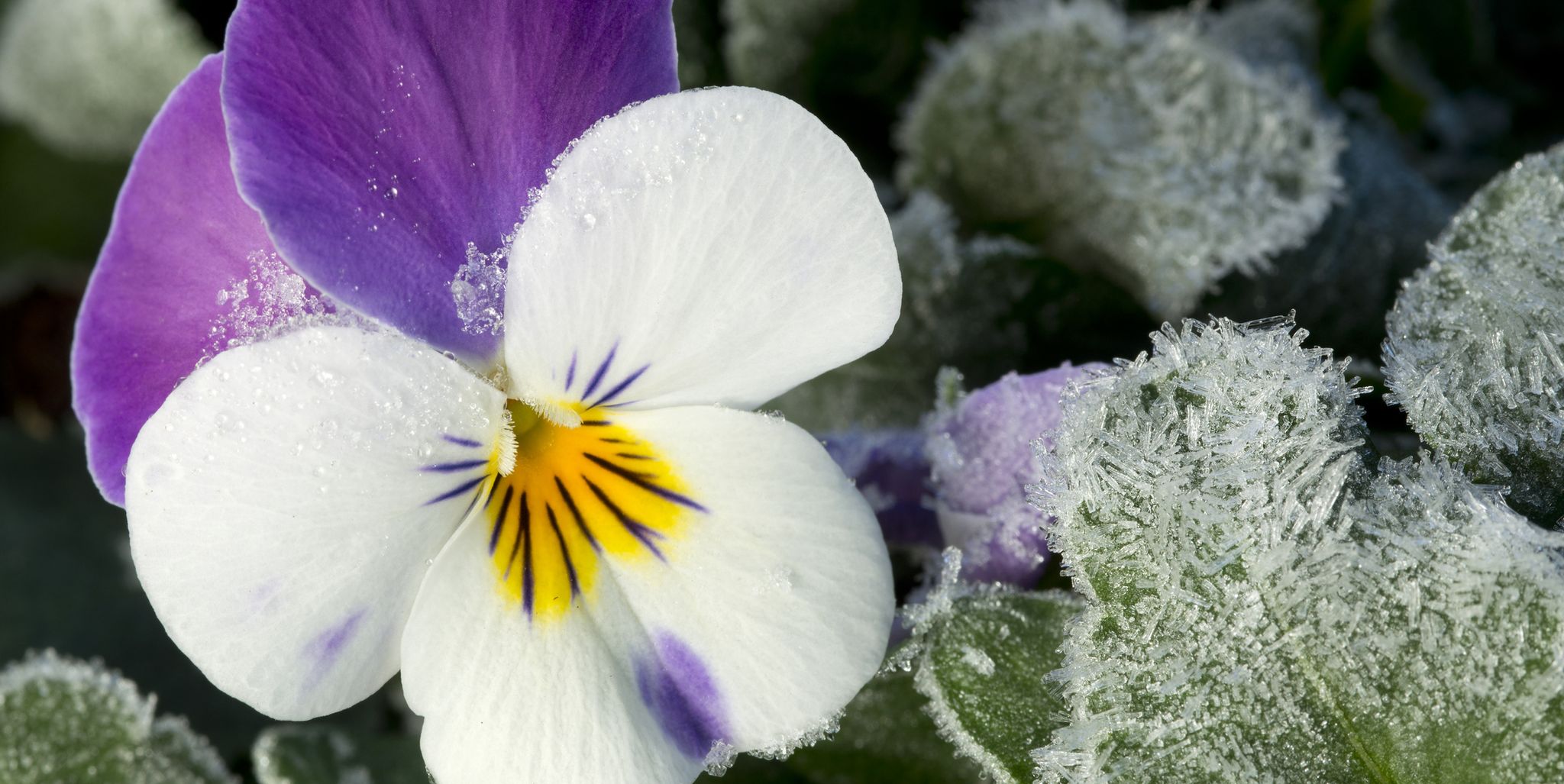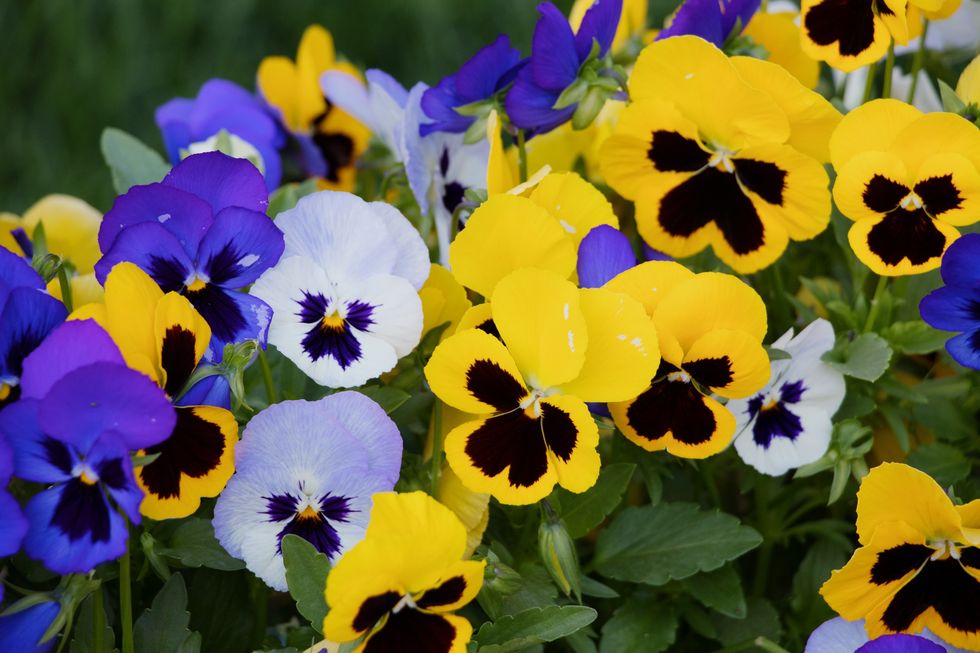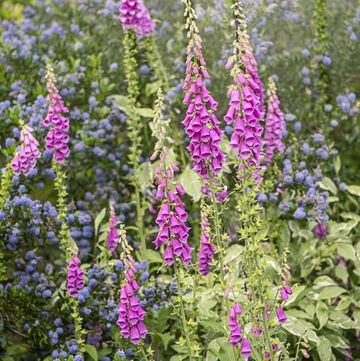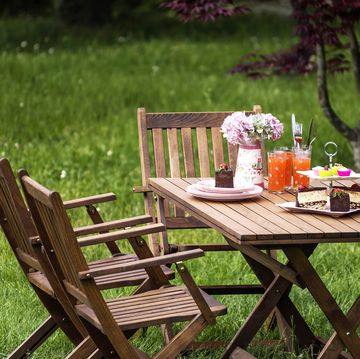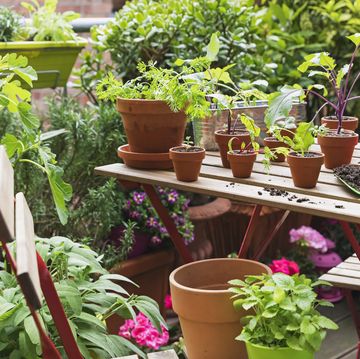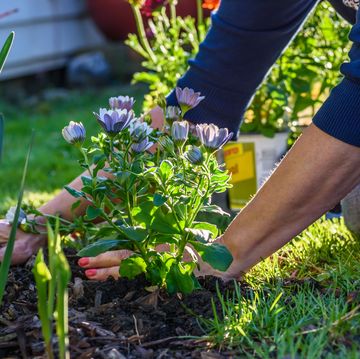As we head into the colder months, flower beds can often start to look a little stark. Luckily, winter flowering pansies are a simple and reliable way to brighten up your garden on those darker days.
Here’s everything you need to know about winter pansies, including the best time to plant them, how long they last, how often you need to water them and everything in-between.
When should you plant winter pansies?
Ideally, plant your pansy plants in borders or pots during September and early October – this will give them a better chance to grow sturdy roots and flowers. The lingering warmth in the soil during this pre-winter period helps to support faster growth and will prepare your pansies for producing more flowers over winter.
How to sow winter pansies
- To give your seeds the best possible chance of germinating, it’s best to start them off indoors from June to July. Simply fill a seed tray, or small pot, with seed compost and tamp down the soil to create a level surface.
- Next, thinly sow the seed across the soil surface. Try to keep sown seeds spaced, as this will make it easier for you when you prick out the seedlings.
- Once sown, thinly cover over the seeds with either soil or vermiculite, and place pot into a tray of water, allowing it to soak from the bottom up for about twenty minutes. This watering method prevents seed disturbance, compared with watering from above with a watering can.
- Once watered, place seed tray, or pot, in a warm greenhouse or on a sunny windowsill. Germination should occur within 14-21 days.
- When seedlings are big enough to handle, carefully prick them out into individual pots to grow on.
How do you plant winter pansies?
Winter pansies are a versatile plant, allowing you to plant them in flower beds, borders, pots, window troughs and hanging baskets. When planting, incorporate a good multi-purpose compost into your soil, and add horticultural grit if the soil is heavy. Dig an individual hole for each plant, and plant pansies at no more than 10cms apart.
As these plants will grow to the height of 15 to 25cms, you want maximum colour in your growing area. Plants tend not to be as vigorous during the winter months, so planting pansies close together will ensure there are no gaps.
What variety of winter pansy should I grow?
Buying plug plants from garden nurseries and online suppliers is the easiest way to quickly get maximum results. So, whether you’re buying or have sown your winter pansies this year, here are a few recommended varieties to try.
1. Pansy ‘Matrix Mixed’
With super-sized flowers in an array of different bright floral colours, this is one of the most popular winter choices. With excellent branching habit, they can withstand the winter weather. BUY NOW
2. Pansy ‘Coolwave Raspberry’
This variety is ideal for hanging baskets and pots. With a gentle cascading habit, these flowers grow fast and have an exceptionally long growing period. BUY NOW
3. Pansy ‘Most Scented’
Grow these by your back door, and you will get to enjoy their spring-like perfume on a winter’s day. With cheery bright colours, they guarantee to put a smile on your face. BUY NOW
Is October to November too late to plant winter pansies?
A hardy species, winter pansies will flower for the majority of the winter season and into spring even when planted in late October or November. With little floral colour, and a lot of vacant space during these months, pansies fill gaps and their foliage provides structure.
Though they prefer full sun, pansies can grow in partial shade. However, shaded flowers will yield a smaller display. It is worth noting that pansies planted later on are less likely to survive harsh winter weather because they have had less time to develop robust roots.
Tips on caring for winter pansies
To lengthen the blooming period of your pansies, pinch out flower heads that have finished blooming to ensure that nutrients aren't wasted. These removed heads will grow new buds, producing more flowers that will last for a longer period.
Also, give plants a regular ‘all-purpose’ feed to ensure they continue to bloom throughout the season.
Do winter pansies come back every year?
Winter pansies are short-term perennial plants, but most gardeners treat them as annuals. If properly planted and cared for, they can last for three years or more.
Pansies can withstand frosty temperatures for a short period of time, drooping during harsher conditions and rebounding when temperatures rise.
However, during prolonged cold spells, give your flowers protection by covering them over with horticultural fleece.
Do you need to water winter pansies?
Despite British winters being notoriously wet, pots under covered areas can still dry out. For the best possible results, make sure covered pansies are regularly watered (and likewise have good drainage).
Check your pansies weekly for any dryness by placing a finger in the pot and watering as needed.
Are winter pansies different to summer pansies?
The difference between winter pansies and summer varieties is that winter breeds are hardier to ensure they survive the colder conditions.
Do winter pansies suffer from any problems?
If you discover small discoloured spots on the foliage, this is most probably downy mildew, a fungal disease. Remove affected foliage and destroy. If plants have been entirely infected, remove entire plant, but avoid re-planting new pansies in the same spot as spores can remain in the soil.
Winter pansies make a tasty snack for slugs and snails, so keep any eye out for these greedy pests. Also, remove fallen debris from the base of plants as this can provide a safe haven for pests.
If you’re growing winter pansies in a pot, container or hanging basket, they will quickly exhaust the nutrients in the soil. Therefore, give your potted displays a feed every fortnight to ensure they continue to colour and produce further flowers.
Are winter pansies part of the viola family?
Although their Latin name is Viola x wittrockiana, pansies shouldn’t be confused with violas, although they are part of the same family. The winter pansy has a larger flower, and is better suited for the colder months. The viola produces more, smaller flowers and thrives in a spring garden. Their heart-shaped petals come in various shades, colours and bicoloured combinations. And with dark markings often found on the inner flower, they can look like smiling faces.
